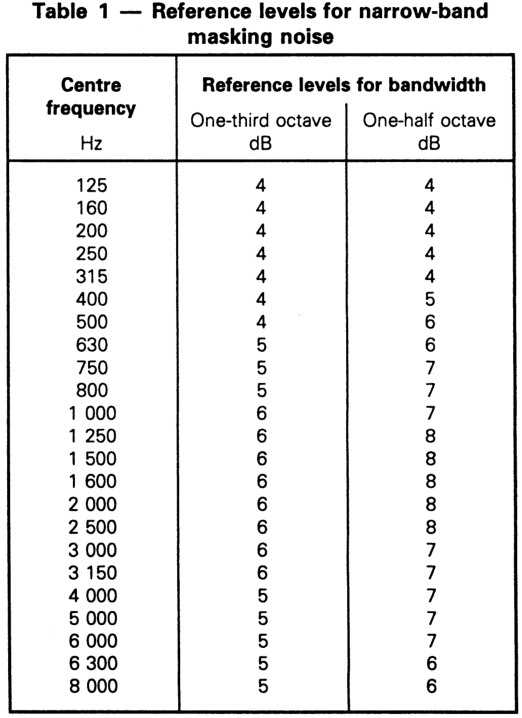Calibrating the masking signal
The procedure for calibrating the masking signal on audiometers is virtually identical to that of the pure-tone procedures described previously for either supra-aural or insert earphones. Apart from three aspects:
- The narrow band masking noise is a fluctuating signal so some sort of averaging on the sound level meter is advisable (e.g. setting it to 'slow'), however if you are going to do this you need to ensure that the signal is on for the duration of the averaging.
- The masker usually comes out of the opposite ear-phone to that of the pure-tone so make sure you are measuring the correct ear.
- The level of narrow band noise required to mask a pure tone is usually a few dB above the level of the tone itself so you in order to calibrate the level of the masker to 0 dB effective masking level you need to add an appropriate adjustment to the equivalent level of tone.
So, if the audiometer produces a 1/3 octave masking noise you need to look up this correction factor in BS EN ISO 389-4 (see table below) and add it to the level of the tone i.e.:
dB HL (audiometer dial) + RETSPL = expected level of tone
dB HL (audiometer dial) + RETSPL + Reference level for narrowband masking noise = expected level of masker for 0dB effective masking
So for a 1kHz tone we might have:
70 dB HL + 7.5 dB = 77.5 dB SPL (expected level of tone)
For the masker:
70 dB HL + 7.5 dB + 6dB = 83.5 dB SPL
Reference levels for narrow-band masking noise (from BS EN ISO 389-4 - it is the 1/3 octave column we need to take)
Table 3 - Reference levels for narrow band masking noise

Table 1 - Reference values for narrow-band masking noises that need to be added to the RETSPL values to give the appropriately calibrated level of masker on the audiometer
References
- BS EN ISO 389-4:1999 Acoustics. Reference zero for the calibration of audiometric equipment - Part 4: Reference levels for narrow-band masking noise